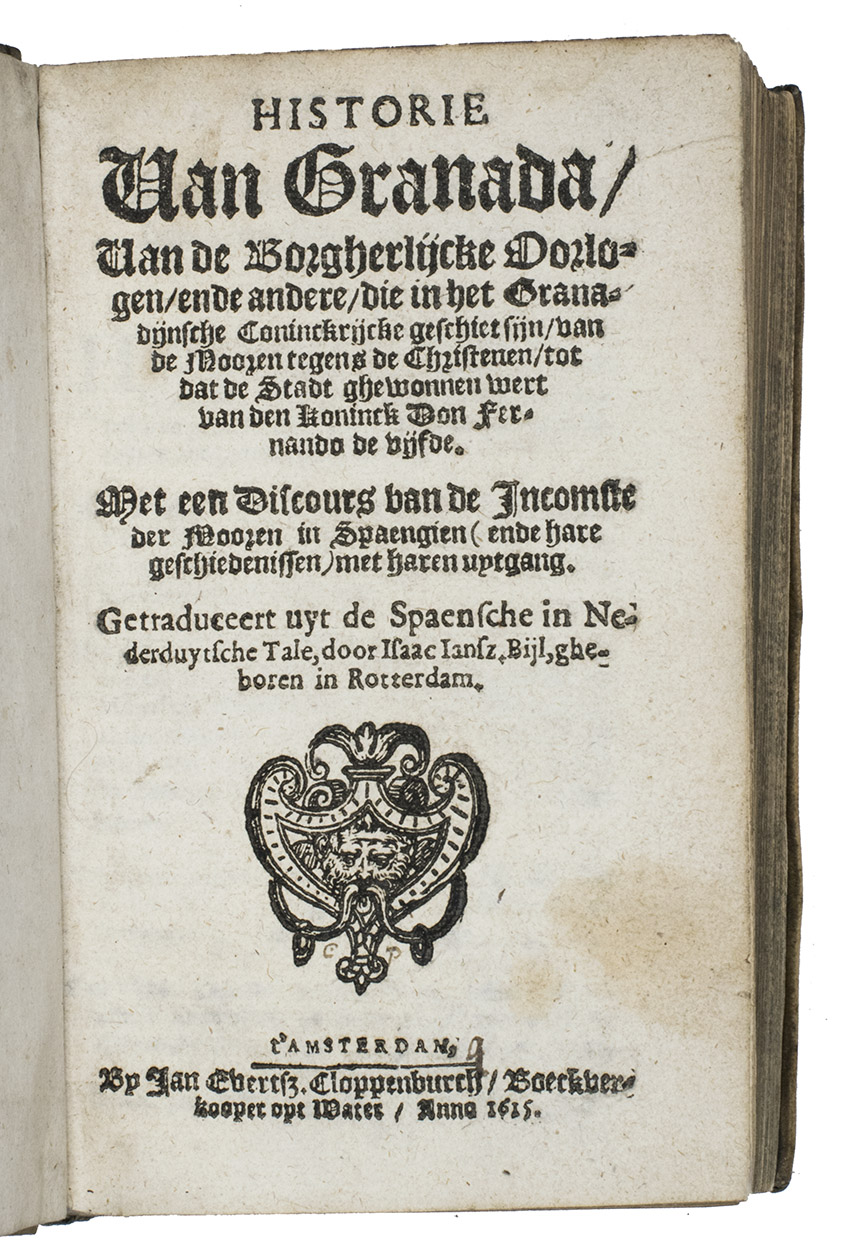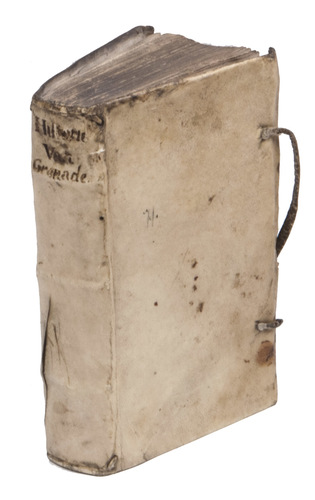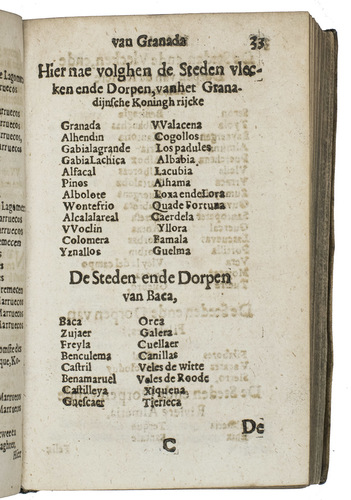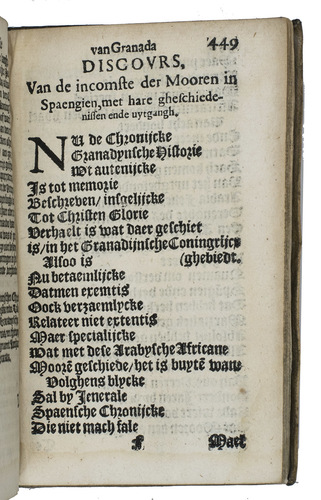[PÉREZ DE HITA, Ginés (ABENHAMIN)].
Historie van Granada, van de Borgherlijcke Oorlogen, ende andere, die in het Granadijnsche coninckrijcke geschiet sijn, van de Mooren tegens de Christenen, tot dat de stadt ghewonnen wert van den koninck Don Fernando de vijfde. Met een discours van de incomste der Mooren in Spaengien (ende hare geschiedenissen) met haren uytgang. Getraduceert uyt de Spaensche in Nederduytsche tale, door Isaac Jansz. Bijl.
Haarlem, Vincent Casteleyn, for Jan Evertsz.Cloppenburch, Amsterdam, 1615. 8vo. Woodcut vignette on the title-page. Contemporary overlapping vellum. 504 pp.
€ 4,500
First and only edition of a highly interesting "History of Granada" from the Muslim conquest of the Iberian peninsula (ca. 725-770) to the Reconquista, and Granadas capitulation in 1492 to the forces of Ferdinand V and Isabella, King and Queen of Aragón and Castile, signalling the end of an independent Muslim power in Spain.
The author is the Spanish novelist and poet Ginés Peréz de Hita (ca. 1544-1619) who attributes his novel to an imaginary Moor Abenhamin. This historical novel is perhaps the earliest example of its kind and certainly the first that attained popularity. It is followed here by a history of the invasion of Spain by the Moors, in Dutch rhetorical verse (pp. 449-504).
Peréz de Hita himself probably took part in the campaigns against the Moors beginning in 1560 and his Las Guerras Civiles, or the Civil wars of Granada and the history of the factions of the Zegries and Abencerrages made him famous. It is a major historical novel, a remarkable work of fiction on the basis of history, interspersed with frontier and Moorish ballads, partly already circulating.
The work combines historic realty with fictional episodes of romantic love inspired by some 40 ballads ("romances moriscos"), whose texts are included. This brilliant and enchanting tableau of courtly life in Granada with its many colorful festivals and tournaments inspired in its turn many writers, including Cervantes who was fascinated by the chivalrous aspects, and Washington Irvings Chronicle of the conquest of Granada (1829).
The novel was translated into Dutch by Isaac Jansz. Bijl, a publicist and translator from Rotterdam, and published by Jan Cloppenburch in 1615.
With an 18th century(?) bookplate of "Coker Court", a manor house, in South Somerset, constructed in the fifteenth century: a rooster with cross on its back. From the library of William Helyar, Member of Parliament for Somerset in 1715 who owned Coker Court. The Helyar family owned sugar plantations in Jamaica; with the initials "C.P." on the title-page. With a tear in the spine and a stain in the right lower corner on the front board. In good condition. E.K. Grootes & J. Jansen, "De produktie van narratief proza omstreeks 1610/1640 ...", in: Tijdschr. voor Neerlandistiek, 19 (1990), p. 115; Biblioteca de autores Españoles, III (1848), i.v.; the Spanish ed. by P. Blanchard-Demouge (Madrid 1913); G. Bleiberg et al, eds., Dictionary of the lit. of the Iberian Peninsula, II (1993), pp. 1259-1260.
Related Subjects:







